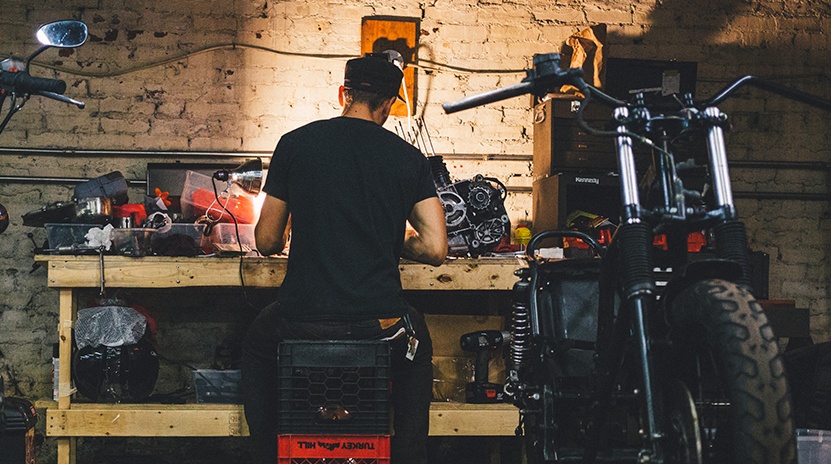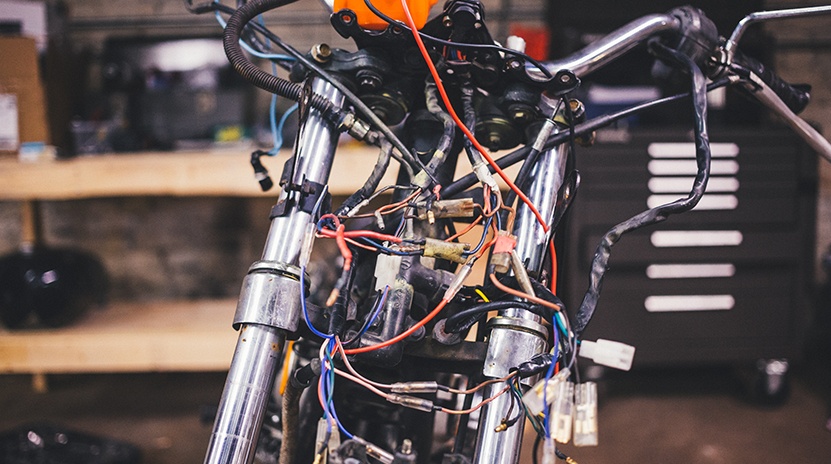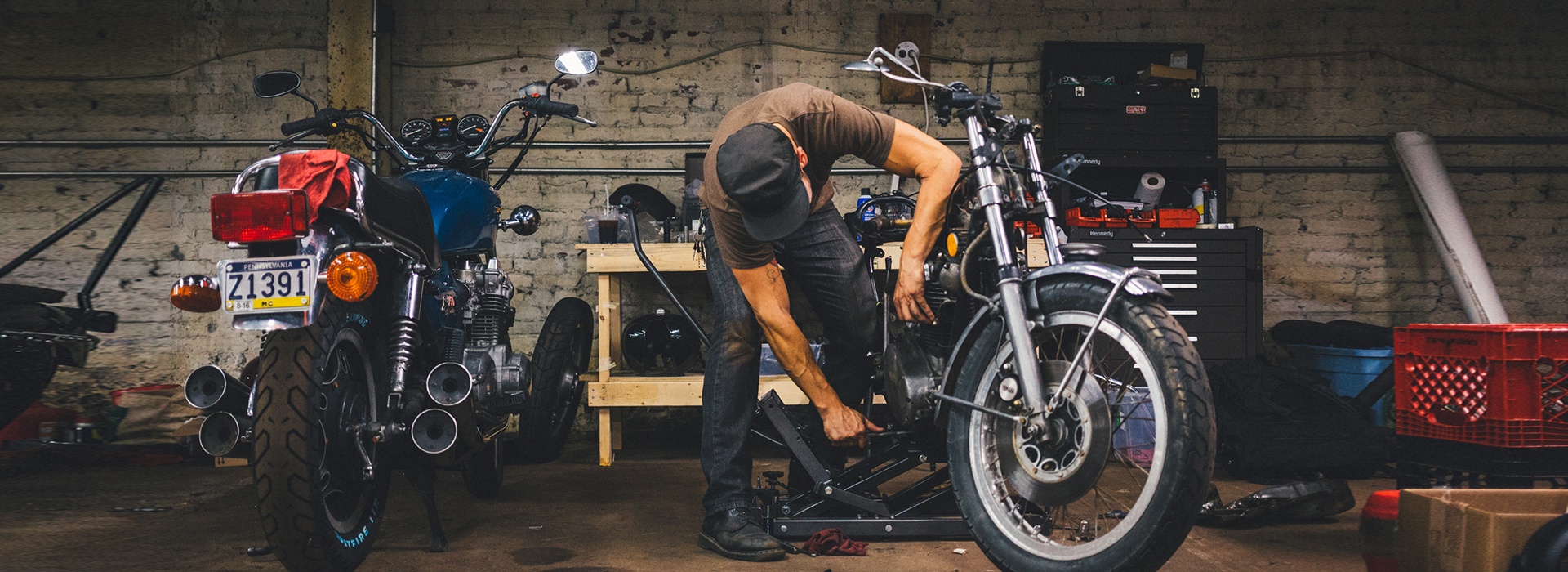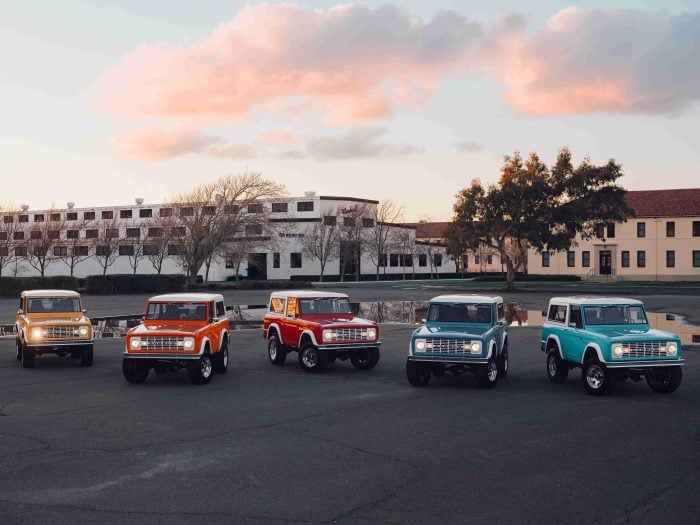In the first installment of The Cool Material Bike Build, we detailed our plan for finding an affordable used motorcycle in questionable condition, fixing it up, customizing it a tad, and getting it up and running as our office bike. Then, in the last post, we showed you the 1976 Yamaha XS650 we scored for $800 along with the work it needed. Now on to the fun part.

This post is sponsored by Motorcycle Mechanics Institute. For more information about graduation rates, the median debt of students who completed the program and other important information, visit www.uti.edu/disclosure
Where To Work?

Nothing is more frustrating than working on a bike outside in poor light, dropping a bolt or important piece, and then searching for hours for it. So to give the XS650 the attention she deserves, we rented out garage space in South Philadelphia, a place close enough to Cool Material HQ for us to pop over after work. Finding garage space was surprisingly easy. We did a little research online and came across an accessible spot for $100/month. We outfitted the space with a heavy-duty workbench and all our tools and toolboxes for our time there. We can’t stress this enough: if you don’t have a good, well-lit space to work on your bike, you’re going to have a hard time.
Anyway, it’s time to get this show on the road.
Getting Started with the Electrical System

Our first inspection was the electrical system. If you remember from the last post, our new office bike was blowing a fuse, and that’s a pretty big deal. We followed the power coming from the battery and through the ignition and charging systems. Turns out, one of the ignition coils (the component that turns battery voltage into a spark) was cracked down the middle. Obviously this was part of the problem. Looking further we noticed a wire that comes from the alternator (the part that charges the battery) had blackened the connector. Maybe a problem, or maybe it had been like that and running fine for years. Either way, having issues in the two main electrical systems was a prompt for us to buy replacements and rewire the bike. A bit of research unveiled that there were a few ways we could do it ourselves that are surprisingly simple.
Taking the Bike Apart
As mentioned in the last post, we wanted to replace the majority of the bearings. To do so, we pulled the wheels, swingarm and forks off the bike to gain access to the bearings. The swing arm looked like it had been serviced after the bike was purchased but all the other pieces were ancient. Because of this, some special tools were required to remove the fork, which we actually ended up fashioning ourselves to save a little bit of cash. With a little bit of know-how and some basic smarts, this isn’t that hard to do.
We also had to remove the engine from the frame. We’re not planning on overhauling the entire engine, but we do want to do proper maintenance and inspection, and because our bike is an XS650, which makes certain parts of the engine hard to access, the engine had to come off. Here’s where it helps to have a good friend and some cold beers to share with them. With the help of a friend, we pulled the engine of our Yamaha. Not fun but worth the time. You don’t want to do that part by yourself. Once on our workbench, we discovered the cylinder block we thought had been painted black was really just covered in grime. We figured a deep clean was in order.
Cleaning Is Rough
This bike needs a cleaning worse than a Tough Mudder junkie without a shower. The parts are filthy. Some look like they haven’t been touched since 1976. Even though cleaning is mundane, if we want our bike to look sleek in the end it absolutely must be done. The parts we planned to paint—wheels, lower fork tubes, headlight, cylinder block—need the most attention to make sure the paint adheres well to the metal. Basically, this is more than a spit shine. The frame required a bit of touching up and the rest of the cleaning was handled with some degreaser and a ton of shop rags. A ton. We spent hours cleaning our Yamaha.
Putting Her Back Together
While putting our bike back together, we basically made a rolling frame, added the engine, added the electrical parts and finished with the components. Is it ready to run? Not quite. But it’s starting to look like a motorcycle again. Next week we’ll finish the reassembly and wiring and finish her off with our custom parts. Some of our customization parts had to be installed during the reassembly, but we’ll get to that next week.
Total Spent on Parts: $700 | Total Spent so Far: $1600

We’re going to go scrub our hands for the foreseeable future. Stay tuned for Part 4, which is coming next week. We’ll get into all the fun that is customizing our new office ride.




